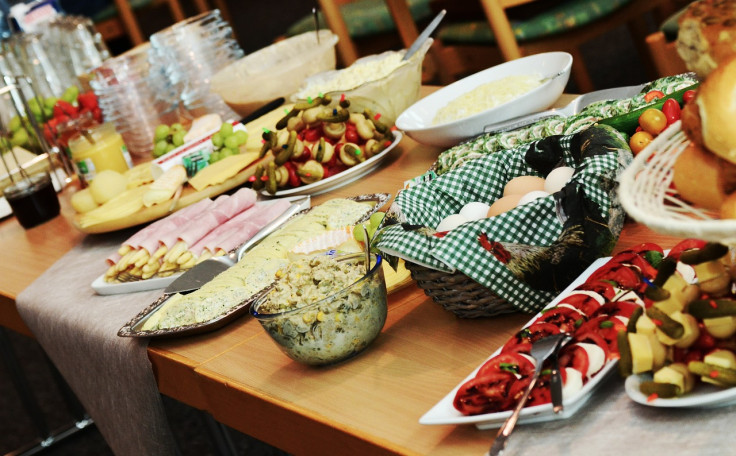Food Safety Tips On Taking Care Of Your Superbowl Leftovers
Superbowl parties offer fun, games and, of course, a lot of food for avid football fans. But what do you do with all the leftovers once the game is over and the guests have left?
Many people have signature dishes they prepare for Superbowl parties. Smart cooks follow food safety tips to make sure that the food they prepare is safe, but they also have to prepare for what to do with all the food that's left.
Safe and proper handling of leftovers is key to reducing one's risks for foodborne illnesses, noted the U.S. Department of Agriculture (USDA).
Here are some of the important food safety tips one should keep in mind while you're taking care of your Superbowl leftovers. (Courtesy: the USDA, Mayo Clinic, Foodsafety.gov and the University of Nebraska-Lincoln (UNL))
Don't leave food in the 'danger zone' for too long
The so-called temperature "danger zone" is said to be between 40 and 140 degrees Fahrenheit (4 and 60 degrees Celsius) as this is the temperature range where bacteria grows "rapidly."
This means that hot foods should be kept warm at 140 degrees Fahrenheit or warmer, while cold foods should remain cool at 40 degrees Fahrenheit or colder. This can be done perhaps using chafing dishes to keep food warm or bowls of ice to keep cold food cold.
Once food has been left out at room temperature, it should be placed in the fridge within two hours. But if the temperature is over 90 degrees Fahrenheit (32 degrees Celsius), such as during summertime, food shouldn't even be left out for an hour.
Any food that's been left out for too long (beyond two hours) should be discarded, noted the USDA.
Cool or freeze them properly
The goal is to cool the food quickly and properly, so one may store them in shallow, small-sized containers where they can cool faster. One could also divide the food into smaller containers, which should ideally be airtight to avoid getting the odors from others foods and, of course, to "keep bacteria out."
Once in the fridge, leftovers can be kept for three to four days, though the risk of food poisoning is said to increase after that. If it is frozen, the food can last longer, potentially even months.
A simple tip from UNL is to label the containers with the date of when they were stored so you have an idea of how long they have been in the fridge or freezer.
Keep in mind, however, that the flavors and moisture may change the longer they're kept in the freezer. Furthermore, some foods, such as gelatin, cheese, creams and puddings, do not keep well in the freezer.
Re-heat the food safely
Once you're ready to have another go at the frozen leftovers, you can opt for one of the possible thawing methods: the refrigerator, microwave or cold water methods.
The microwave method is said to be the fastest one. Keep in mind to use a microwave-safe container, and to make sure that the food is heated evenly. Then you can continue heating it to the safe internal temperature of 165 degrees Fahrenheit (75 degrees Celsius). A food thermometer can be used to make sure a safe temperature is reached.
The refrigerator method is relatively slow as you will have to move the food to the fridge and perhaps keep it there overnight. But this also means that it's at a safe temperature the entire time before it's ready to get re-heated.
On the other hand, the cold water method is a bit faster than the refrigerator method, simply requiring the food to be placed in a leakproof container in cold water. However, this is more meticulous as water or bacteria may enter the food if the bag happens to leak.
No matter which method you choose, what's important is to not thaw the leftovers by simply leaving them out on the counter. Using a slow cooker to reheat leftovers also isn't advised as this may leave the food in the danger zone for too long.
Remember that leftovers should reach internal temperatures of 165 degrees Fahrenheit or, in the case of soups and sauces until they come to a rolling boil.
"Not cooking food to a safe temperature and leaving food out at an unsafe temperature are the two main causes of foodborne illness," noted the USDA.

© Copyright IBTimes 2025. All rights reserved.






















